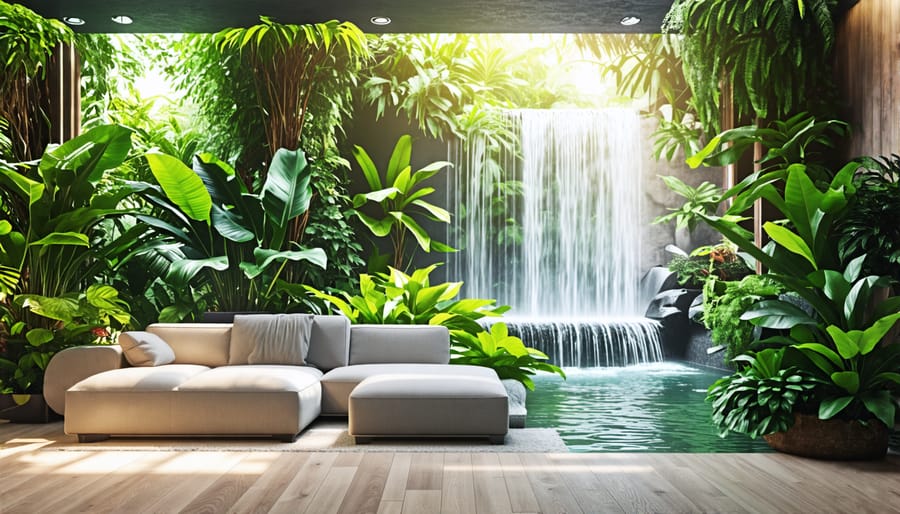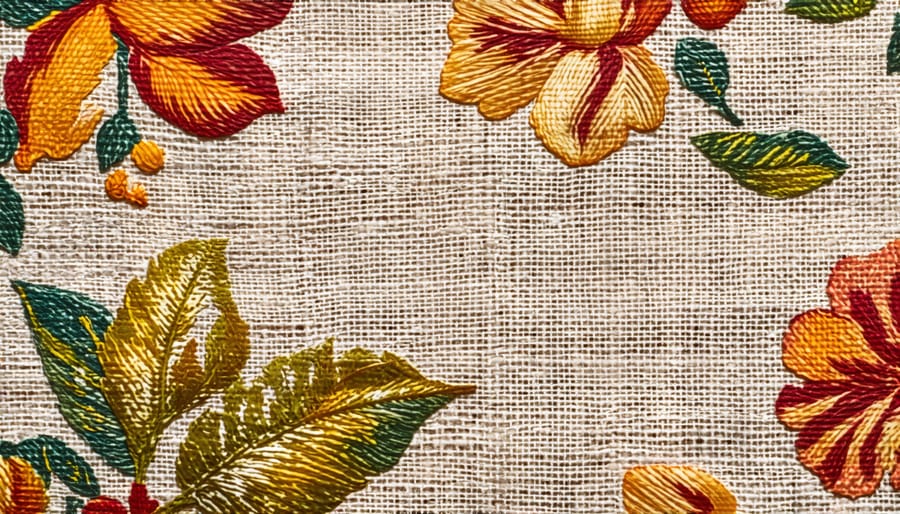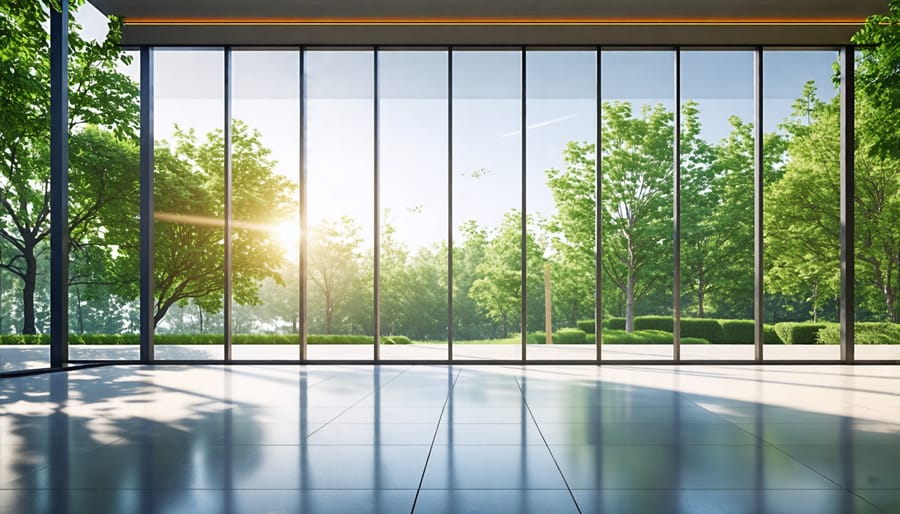Incorporate natural light by opening blinds and situating mirrors to reflect sunlight throughout your space. Integrate greenery by placing potted plants or creating a vertical garden to introduce texture and air purification. Use natural materials like wood, stone, or bamboo for furniture and accents to enhance organic warmth. Foster a serene atmosphere by choosing a color palette inspired by nature’s hues—soft greens, earthy browns, or calming blues.
Why Biophilic Design Matters
Imagine walking into a room where sunlight dances on the walls, plants greet you at every corner, and the gentle sound of a water feature soothes your senses. This is the power of biophilic design—a thoughtful integration of nature into our built environments. It’s more than just decoration; it’s a transformative approach that deeply benefits our mental and physical well-being.
Incorporating elements of nature can significantly enhance our psychological state—boosting mood, reducing stress, and even increasing cognitive function. Studies have shown that environments filled with natural elements like wood, stone, or plants can lower blood pressure and heart rates, contributing to overall health improvement. This makes biophilic design a compelling choice for anyone looking to create a nurturing space at home.
Moreover, the presence of natural elements is known to inspire creativity and foster enhanced productivity. Imagine a home office surrounded by lush greenery or a studio filled with natural light filtering through large windows. Such spaces can invigorate your mind and unleash a flow of fresh ideas—helpful whether you’re working from home or engaging in creative pursuits.
Lastly, biophilic design nurtures a sense of well-being, grounding us in a fast-paced world. A simple step like adding a few potted plants can instantly lift a room’s atmosphere, making it inviting and peaceful. Whether you’re a homeowner or a renter, incorporating elements of biophilic design can be as simple as rearranging your furniture to maximize sunlight or adding a mini herb garden to your kitchen.
Try introducing a touch of nature into your space and experience the profound difference it can make.
Core Principles of Biophilic Design
Connecting with Nature
Imagine stepping into a home where each element brings you closer to the natural world. With biophilic design, you can transform your space into such an oasis by directly incorporating natural elements. Start with plants: they’re the easiest and most versatile option. Whether it’s a small succulent arrangement on your desk or a cascading fern hanging in the corner, plants breathe life and color into any room. Plus, they improve air quality, making your home healthier and more vibrant.
If you’re feeling a bit adventurous, consider adding a water feature like a small indoor fountain or tabletop waterfall. The gentle sound of flowing water can create a calming atmosphere, offering an oasis of tranquility amidst daily hustle. These features, whether pre-made or DIY, serve as beautiful focal points, drawing the eye and soothing the soul.
Natural light is another key element in connecting with nature. Embrace sunshine by keeping windows unobstructed, using sheer curtains, or adding mirrors to reflect light throughout your space. These simple changes can make rooms feel airy and open, helping you feel more aligned with the outdoors.
Remember, the goal is to create harmony between your living space and nature. Start with small changes, and soon enough, you’ll notice a significant difference in how your home feels.

Natural Patterns and Forms
Imagine the soothing feel of a space that wraps you in the embrace of nature. Biophilic design uses natural patterns and forms to bring this comfort into your home. Think of the flow of a gentle stream or the symmetrical beauty of a leaf. These elements can easily translate into your space through smart choices like natural fabrics or biomorphic shapes. For instance, using wood grain textures not only feels inviting but also echoes the forest’s timeless allure. Consider incorporating serene, natural paint colors to further enhance this effect. Light fixtures or furniture with curvilinear shapes can mimic organic growth, providing visual interest that feels familiar yet refreshing. An easy DIY project could be creating plant wall art using real or faux leaves for a tactile pattern that’s as engaging to the eyes as it is to the touch. By adopting these techniques, you harmonize your living space with the rhythms of nature, making it not just a house, but a sanctuary. In a world that often feels hectic, surrounding yourself with these natural motifs offers a peaceful retreat right at home.

Light and Space
Harnessing natural light and creating open spaces in our homes is a cornerstone of biophilic design, offering a delightful way to bring the essence of the outdoors inside. Natural light not only brightens rooms but also uplifts our mood, boosts our wellbeing, and enhances the sense of space. One simple, yet effective DIY approach is to strategically position mirrors to reflect sunlight deeper into your rooms, instantly maximizing the available light.
Windows play a crucial role, too. Opt for sheer curtains that allow sunlight to maintain its warming embrace. When possible, arrange furniture to ensure open sight lines, letting light permeate the entire space. Consider also the use of light, natural colors for walls and furnishings to further enhance brightness.
Creating a sense of openness often involves a bit of creative rearranging. Declutter frequently and think vertically—shelves and tall plants can draw the eye upwards, adding dimension without filling the room. When walls are necessary, opt for partial barriers, like translucent partitions, to keep rooms feeling connected.
Ultimately, these thoughtful adjustments not only mimic the open, airy feel of nature but also craft a more inviting, serene environment in which to live, work, and play.

Practical Tips to Implement Biophilic Design
Embracing biophilic design in your home doesn’t require a complete remodel or hefty investment. With a few thoughtful touches and some creative spirit, you can infuse nature’s harmony into your living space. Start with the basics: bringing in plants. Houseplants don’t just purify the air; they bring a sense of tranquility and renewal. If you’re uncertain about where to begin, style indoor plants by grouping them on a windowsill or creating a lush green corner in your living room. Consider varying plant heights and leaf textures to add depth and visual interest.
Natural light is another key aspect of biophilic design. Draw back those heavy curtains or replace them with sheer ones to let the daylight flood in. Not only does this brighten your space, but it connects you with the rhythm of nature right outside your window. If privacy is a concern, strategically place taller plants or use frosted glass clings for the perfect blend of seclusion and light.
To enhance your home’s sensory experience, incorporate natural materials. Think wooden furniture, stone accents, or woven textiles. These elements create a tactile connection to the natural world. You don’t need to overhaul your existing furnishings; simply adding a bamboo rug or a stone coffee table can make a remarkable difference.
Reflect on your color palette. Opt for earth tones like soft greens, warm browns, and gentle blues that echo the landscapes outside. A fresh coat of paint or a few new accessories like cushions and throws can subtly shift the ambiance to one that’s calm and inviting.
Finally, don’t underestimate the power of water features. If installing a fountain sounds daunting, a small tabletop water feature can still bring the soothing sounds of flowing water indoors, promoting relaxation.
Embrace the essence of biophilic design by prioritizing what resonates with you. These small changes invite nature into your home, creating a serene sanctuary that nurtures well-being and connection with the natural world.
Common Mistakes to Avoid
Incorporating biophilic elements can truly transform your space, but there are common mistakes to watch out for. Overcrowding with plants can overwhelm rather than soothe, so start small and assess how each addition feels. Ignoring the balance between natural light and green elements is another pitfall; aim for harmony to avoid a chaotic look. Forgetting about maintenance needs might lead to neglected, unhealthy plants—choose easy-care varieties if you’re unsure. Lastly, try not to randomly scatter elements; consider a cohesive design plan that complements your existing decor. With these tips, you’ll create a peaceful, refreshing environment that boosts well-being.
Conclusion
Embracing biophilic design can transform your living space into a more inviting, stress-reducing environment while fostering a deeper connection to nature. Starting small is key—consider adding a few plants or natural materials to your home. Even minor changes can make a significant impact, enriching your daily life and enhancing your well-being.
